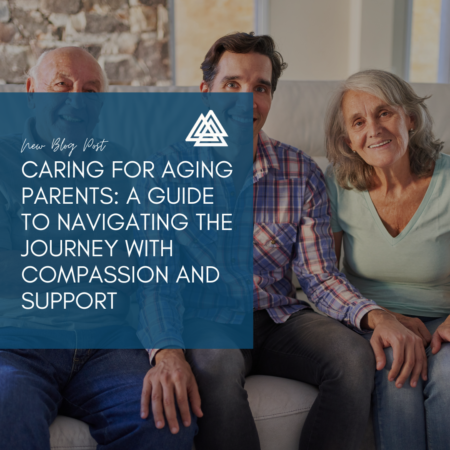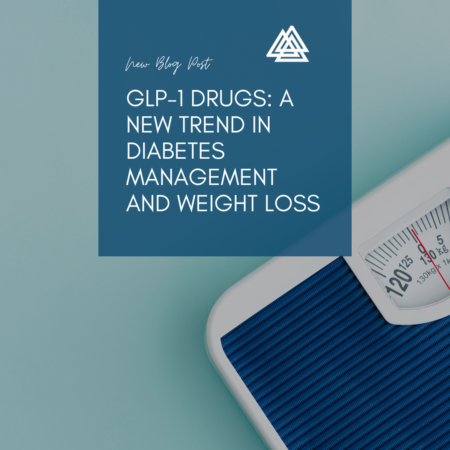Prism Post
 Cholesterol-lowering medications, often prescribed to help manage high cholesterol levels, play a crucial role in reducing the risk of heart disease, stroke, and other cardiovascular conditions. While these drugs can be highly effective, they may also come with side effects that can affect a patient’s quality of life. Understanding these side effects is essential for anyone taking cholesterol medications or considering them. In this blog post, we will explore the common side effects associated with cholesterol drugs and what patients can do to manage them.
Cholesterol-lowering medications, often prescribed to help manage high cholesterol levels, play a crucial role in reducing the risk of heart disease, stroke, and other cardiovascular conditions. While these drugs can be highly effective, they may also come with side effects that can affect a patient’s quality of life. Understanding these side effects is essential for anyone taking cholesterol medications or considering them. In this blog post, we will explore the common side effects associated with cholesterol drugs and what patients can do to manage them.
Types of Cholesterol-Lowering Medications
Before discussing side effects, it’s important to understand the different types of cholesterol-lowering medications available. The most commonly prescribed classes of these drugs include:
- Statins: These are the most widely used cholesterol-lowering medications. They work by blocking a substance your body needs to make cholesterol, thereby reducing LDL (low-density lipoprotein) cholesterol levels.
- Bile Acid Sequestrants: These drugs help remove cholesterol from the bloodstream by binding to bile acids in the intestine.
- Cholesterol Absorption Inhibitors: These medications work by preventing the absorption of cholesterol from the food you eat.
- PCSK9 Inhibitors: A newer class of medications that lower LDL cholesterol by enhancing the liver’s ability to remove cholesterol from the blood.
- Fibrates: Primarily used to lower triglycerides and, to some extent, increase HDL (high-density lipoprotein) cholesterol.
- Niacin: This vitamin can help lower LDL cholesterol and triglycerides while raising HDL cholesterol.
Common Side Effects
While many people tolerate cholesterol medications well, some may experience side effects. Here are some common side effects associated with these drugs:
- Muscle Pain and Weakness
- Statins: One of the most reported side effects of statins is muscle pain or weakness, often referred to as myalgia. In some cases, this can escalate to rhabdomyolysis, a rare but serious condition that leads to muscle breakdown and kidney damage.
- Digestive Issues
- Bile Acid Sequestrants and Cholesterol Absorption Inhibitors: These medications can cause digestive problems such as bloating, gas, constipation, and diarrhea. These side effects are often due to changes in bile acid flow or cholesterol absorption in the intestines.
- Liver Damage
- Statins: Elevated liver enzymes can occur in some individuals taking statins, indicating potential liver damage. Regular liver function tests are usually recommended for patients on these medications to monitor any changes.
- Increased Blood Sugar Levels
- Statins: There is evidence suggesting that statin use can lead to a slight increase in blood sugar levels, which may be a concern for individuals with diabetes or those at risk for developing diabetes.
- Skin Reactions
- Niacin: This vitamin can cause flushing, itching, and rashes in some individuals, particularly when taken at higher doses.
- Neurological Effects
- Statins: Some studies have raised concerns about cognitive issues, including memory loss or confusion, although these side effects are generally considered rare and reversible.
Managing Side Effects
If you experience side effects from cholesterol medications, it’s essential to communicate with your healthcare provider. Here are some tips for managing side effects:
- Stay Informed: Understand the potential side effects associated with your specific medication. Being aware can help you identify and report any issues promptly.
- Adjust Dosages: In some cases, adjusting the dosage or switching to a different medication may alleviate side effects. Your healthcare provider can help determine the best approach.
- Incorporate Lifestyle Changes: Dietary changes, regular exercise, and weight management can significantly impact cholesterol levels. These lifestyle modifications may also reduce the need for higher medication doses, potentially decreasing side effects.
- Regular Monitoring: Schedule regular follow-up appointments with your healthcare provider to monitor your cholesterol levels and assess any side effects. Blood tests can help track liver function, muscle enzyme levels, and blood sugar levels.
Conclusion
While cholesterol-lowering medications are essential for managing high cholesterol and reducing the risk of cardiovascular diseases, they can also come with side effects that affect patients’ daily lives. Understanding these side effects, communicating openly with healthcare providers, and adopting a proactive approach to managing them can help patients navigate their treatment journey more effectively. Remember that the benefits of cholesterol medications often outweigh the risks, but it’s crucial to stay informed and involved in your healthcare decisions. If you have concerns about your cholesterol medication or its side effects, don’t hesitate to reach out to your healthcare provider for personalized advice and support.
 As our parents age, the roles we play in their lives often shift. What was once a parent-child relationship may transform into a caregiver dynamic, requiring us to provide support and assistance as they navigate the challenges of aging. While this transition can be rewarding, it can also be overwhelming and emotionally charged. In this blog post, we’ll explore practical tips and strategies for effectively caring for aging parents while maintaining your own well-being.
As our parents age, the roles we play in their lives often shift. What was once a parent-child relationship may transform into a caregiver dynamic, requiring us to provide support and assistance as they navigate the challenges of aging. While this transition can be rewarding, it can also be overwhelming and emotionally charged. In this blog post, we’ll explore practical tips and strategies for effectively caring for aging parents while maintaining your own well-being.
1. Understand Their Needs
The first step in providing care for aging parents is to understand their needs and preferences. Every individual is unique, and their requirements may vary based on health status, lifestyle, and personal choices. Here are some ways to assess their needs:
- Communicate Openly: Engage in honest conversations with your parents about their health, daily routines, and any challenges they may be facing. Encourage them to share their concerns and wishes regarding their care.
- Assess Health Status: Pay attention to their physical and mental health. Consider factors such as mobility, medication management, and cognitive function. This assessment will help you determine what type of support they may need.
2. Create a Care Plan
Once you have a better understanding of your parents’ needs, creating a comprehensive care plan can help ensure they receive the necessary support. Consider including the following elements in your plan:
- Daily Routines: Establish a schedule for meals, medications, and activities to provide structure and predictability.
- Medical Care: Coordinate medical appointments and manage medications. Keep a list of healthcare providers and important medical information readily available.
- Emergency Plan: Develop an emergency plan that outlines steps to take in case of a medical crisis, including contact information for healthcare providers and emergency services.
3. Encourage Independence
While it’s essential to provide support, encouraging independence is equally important. Allowing your parents to maintain their autonomy can boost their self-esteem and improve their overall well-being. Here are some ways to foster independence:
- Involve Them in Decisions: Whenever possible, involve your parents in decisions regarding their care. This empowers them to express their preferences and maintain a sense of control.
- Adapt the Living Environment: Consider making modifications to their home to enhance safety and accessibility. This could include installing grab bars, improving lighting, and removing tripping hazards.
- Promote Social Engagement: Encourage your parents to participate in social activities, hobbies, and community events. Social engagement is vital for mental and emotional health.
4. Prioritize Communication
Maintaining open lines of communication is crucial for ensuring that your parents feel heard and supported. Here are some tips for effective communication:
- Practice Active Listening: Pay attention to what your parents say and validate their feelings. Show empathy and understanding, especially when discussing sensitive topics.
- Address Difficult Topics: Conversations about end-of-life planning, financial matters, and care preferences can be challenging but necessary. Approach these discussions with sensitivity and patience.
- Check-In Regularly: Make it a habit to check in with your parents regularly, whether through phone calls, video chats, or in-person visits. Consistent communication can help you stay informed about their well-being.
5. Seek Support
Caring for aging parents can be emotionally and physically taxing, so it’s essential to prioritize your well-being as well. Here are some ways to seek support:
- Build a Support Network: Connect with family members, friends, or local community organizations who can offer assistance or share experiences. Having a support system can alleviate feelings of isolation.
- Explore Respite Care: Consider respite care options to give yourself a break. Respite care services can provide temporary relief, allowing you to recharge and maintain your own health.
- Access Professional Help: If you’re feeling overwhelmed, don’t hesitate to seek professional assistance. Gerontologists, social workers, and counselors can provide valuable resources and guidance.
6. Take Care of Yourself
Lastly, remember that self-care is vital when caring for aging parents. It’s easy to neglect your own needs while focusing on their well-being, but maintaining your physical and mental health is crucial. Here are some self-care tips:
- Set Boundaries: Establish boundaries to protect your time and energy. It’s okay to say no to additional responsibilities when you need to prioritize your well-being.
- Engage in Stress-Relief Activities: Incorporate activities that help you relax and recharge, such as exercise, meditation, hobbies, or spending time with friends.
- Seek Professional Help if Needed: If you’re feeling overwhelmed or experiencing caregiver burnout, consider talking to a therapist or counselor who can help you navigate your emotions.
Conclusion
Caring for aging parents can be a rewarding yet challenging journey. By understanding their needs, creating a thoughtful care plan, and prioritizing communication and self-care, you can navigate this transition with compassion and support. Remember that you are not alone in this journey, and seeking help when needed is a sign of strength. Embrace this opportunity to strengthen your relationship with your parents while ensuring their well-being and happiness in their golden years.
 Insomnia is a common sleep disorder that affects millions of people worldwide. Characterized by difficulty falling asleep, staying asleep, or waking up too early, insomnia can significantly impact your quality of life, leading to fatigue, irritability, and difficulties with concentration. Fortunately, there are several strategies to help you overcome insomnia and achieve a restful night’s sleep. In this blog post, we’ll explore effective techniques and lifestyle changes that can help you beat insomnia and promote better sleep health.
Insomnia is a common sleep disorder that affects millions of people worldwide. Characterized by difficulty falling asleep, staying asleep, or waking up too early, insomnia can significantly impact your quality of life, leading to fatigue, irritability, and difficulties with concentration. Fortunately, there are several strategies to help you overcome insomnia and achieve a restful night’s sleep. In this blog post, we’ll explore effective techniques and lifestyle changes that can help you beat insomnia and promote better sleep health.
1. Establish a Consistent Sleep Schedule
One of the most effective ways to improve your sleep quality is to establish a regular sleep schedule. Going to bed and waking up at the same time every day helps regulate your body’s internal clock, making it easier to fall asleep and wake up feeling refreshed. Here’s how to create a consistent sleep schedule:
- Set a Fixed Bedtime: Choose a bedtime that allows for 7-9 hours of sleep and stick to it, even on weekends.
- Create a Relaxing Pre-Sleep Routine: Engage in calming activities before bed, such as reading, taking a warm bath, or practicing relaxation exercises. This helps signal to your body that it’s time to wind down.
2. Create a Sleep-Inducing Environment
Your sleep environment plays a crucial role in your ability to fall asleep and stay asleep. Making a few adjustments can significantly enhance your sleep quality:
- Limit Noise and Light: Use blackout curtains to block out light and consider white noise machines or earplugs to minimize disruptive sounds.
- Optimize Temperature: Keep your bedroom cool, ideally between 60-67°F (15-19°C), as a lower temperature is conducive to sleep.
- Invest in Comfortable Bedding: Ensure your mattress and pillows are supportive and comfortable. A good quality mattress can make a significant difference in sleep quality.
3. Limit Screen Time Before Bed
The blue light emitted by smartphones, tablets, and computers can interfere with your ability to fall asleep. Blue light can disrupt the production of melatonin, the hormone that regulates sleep. To promote better sleep:
- Set a Screen Curfew: Aim to turn off all electronic devices at least 30-60 minutes before bedtime.
- Use Blue Light Filters: If you must use screens in the evening, consider using blue light blocking glasses or enable the night mode feature on your devices.
4. Watch Your Diet and Caffeine Intake
What you consume can significantly affect your sleep patterns. Here are some dietary tips to consider:
- Limit Caffeine and Nicotine: Both caffeine and nicotine are stimulants that can interfere with sleep. Try to avoid them in the afternoon and evening.
- Avoid Heavy Meals Before Bed: Eating large or spicy meals too close to bedtime can cause discomfort and disrupt your sleep. Aim to finish eating at least 2-3 hours before going to bed.
- Consider Sleep-Promoting Foods: Incorporate foods rich in tryptophan, magnesium, and melatonin into your diet, such as turkey, nuts, seeds, and cherries.
5. Incorporate Relaxation Techniques
Managing stress and anxiety is essential for combating insomnia. Incorporating relaxation techniques into your daily routine can help you unwind and prepare for sleep:
- Practice Mindfulness and Meditation: Mindfulness practices can help calm your mind and reduce anxiety. Consider using guided meditation apps or practicing deep breathing exercises.
- Try Progressive Muscle Relaxation: This technique involves tensing and relaxing different muscle groups in your body, promoting physical relaxation and reducing tension.
- Engage in Gentle Yoga or Stretching: Gentle yoga or stretching before bed can help release tension in your muscles and prepare your body for sleep.
6. Limit Naps During the Day
While short naps can be refreshing, long or irregular napping during the day can negatively impact nighttime sleep. If you must nap:
- Keep Naps Short: Limit naps to 20-30 minutes to avoid disrupting your nighttime sleep schedule.
- Time Your Naps Wisely: Try to nap earlier in the day rather than in the late afternoon or evening.
7. Seek Professional Help When Needed
If you’ve tried these strategies and still struggle with insomnia, it may be time to consult a healthcare professional. Persistent insomnia can be a sign of an underlying health issue or sleep disorder that requires further evaluation. Your healthcare provider can help identify the root cause and recommend appropriate treatments, which may include cognitive-behavioral therapy for insomnia (CBT-I) or medication.
Conclusion
Beating insomnia requires a multifaceted approach that combines lifestyle changes, sleep hygiene practices, and relaxation techniques. By establishing a consistent sleep schedule, creating a conducive sleep environment, managing your diet, and incorporating relaxation methods, you can significantly improve your sleep quality. Remember that everyone is different, so it may take some time to find the right combination of strategies that work for you. If your insomnia persists, don’t hesitate to seek professional guidance to help you regain control of your sleep and overall well-being. Sweet dreams!
 Hormone therapy (HT) has been a topic of much discussion and debate in the medical community, particularly regarding its impact on women’s health during and after menopause. While it is often prescribed to alleviate menopausal symptoms such as hot flashes and mood swings, its effects on cardiovascular health are complex and warrant careful consideration. In this blog post, we’ll explore how hormone therapy can influence cardiovascular health, the risks and benefits associated with its use, and what women should know when considering this treatment option.
Hormone therapy (HT) has been a topic of much discussion and debate in the medical community, particularly regarding its impact on women’s health during and after menopause. While it is often prescribed to alleviate menopausal symptoms such as hot flashes and mood swings, its effects on cardiovascular health are complex and warrant careful consideration. In this blog post, we’ll explore how hormone therapy can influence cardiovascular health, the risks and benefits associated with its use, and what women should know when considering this treatment option.
Understanding Hormone Therapy
Hormone therapy involves the administration of hormones—typically estrogen, progesterone, or a combination of both—to help manage symptoms associated with hormonal fluctuations, particularly during menopause. HT can take various forms, including:
- Estrogen-only therapy: Often prescribed for women who have had a hysterectomy.
- Combined hormone therapy: Involves both estrogen and progesterone, typically for women who still have their uterus.
- Bioidentical hormones: Compounds that are chemically identical to those produced by the human body, often used in alternative therapies.
Hormone Therapy and Cardiovascular Health
The relationship between hormone therapy and cardiovascular health is multifaceted. Several studies have investigated how HT can affect the risk of heart disease, stroke, and other cardiovascular conditions.
- The Timing Hypothesis
One of the most significant findings in recent research is the “timing hypothesis,” which suggests that the age at which a woman begins hormone therapy can influence its cardiovascular effects. According to this hypothesis:
- Early Initiation: Starting hormone therapy around the onset of menopause may have a protective effect on cardiovascular health. Research indicates that women who initiate HT during this window may experience a lower risk of heart disease compared to those who start later.
- Late Initiation: Conversely, women who begin hormone therapy several years after menopause may have an increased risk of cardiovascular events. This risk is thought to be related to the existing age-related changes in the cardiovascular system and the effects of prolonged estrogen deficiency.
- Impact on Cholesterol Levels
Hormone therapy can positively influence lipid profiles in women. Estrogen is known to:
- Increase HDL Cholesterol: Estrogen therapy has been shown to raise levels of high-density lipoprotein (HDL) cholesterol, often referred to as “good” cholesterol, which helps transport cholesterol to the liver for elimination.
- Lower LDL Cholesterol: Some studies suggest that HT may help lower low-density lipoprotein (LDL) cholesterol, or “bad” cholesterol, contributing to better overall cardiovascular health.
- Effects on Blood Pressure
The impact of hormone therapy on blood pressure is somewhat controversial. Some studies indicate that:
- Estrogen Can Lower Blood Pressure: Estrogen has vasodilatory effects, meaning it can help widen blood vessels, potentially leading to lower blood pressure.
- Risk of Hypertension: In some women, especially those who are older or have pre-existing conditions, hormone therapy may contribute to increased blood pressure. Regular monitoring is essential for women on HT.
- Risk of Thrombosis and Stroke
One of the more significant risks associated with hormone therapy is an increased likelihood of thromboembolic events, including deep vein thrombosis (DVT) and stroke. Factors influencing this risk include:
- Route of Administration: Oral hormone therapy has been associated with a higher risk of blood clots compared to transdermal (patches or gels) or vaginal formulations. This is because oral estrogen can affect the liver’s production of clotting factors.
- Individual Risk Factors: Women with a history of clotting disorders, smoking, obesity, or a family history of cardiovascular disease may face heightened risks when using hormone therapy.
Weighing the Benefits and Risks
When considering hormone therapy, women must weigh the potential benefits against the risks. Some potential benefits of hormone therapy include:
- Relief from menopausal symptoms such as hot flashes, night sweats, and mood swings.
- Improvement in bone density, reducing the risk of osteoporosis.
- Potential protective effects on cardiovascular health if initiated early in menopause.
However, the risks, particularly concerning cardiovascular health, should not be taken lightly. Women should have open discussions with their healthcare providers about their individual health history, risk factors, and goals for hormone therapy.
Conclusion
Hormone therapy can significantly impact cardiovascular health, with both potential benefits and risks. Understanding how hormone therapy affects the cardiovascular system is crucial for women considering this treatment option. The timing of initiation, method of administration, and individual risk factors all play essential roles in determining the outcomes of hormone therapy.
If you’re contemplating hormone therapy as part of your menopause management plan, consult with your healthcare provider to ensure you make informed decisions tailored to your unique health needs. By understanding the nuances of hormone therapy, you can take proactive steps toward maintaining your overall well-being during this transitional phase of life.
 In recent years, GLP-1 (glucagon-like peptide-1) receptor agonists have emerged as a groundbreaking class of medications, revolutionizing the management of type 2 diabetes and capturing attention in the realm of weight loss. With their ability to enhance blood sugar control, promote weight loss, and even improve cardiovascular health, GLP-1 drugs are gaining popularity among healthcare providers and patients alike. In this blog post, we’ll explore what GLP-1 drugs are, how they work, their benefits, and their growing trend in the medical community.
In recent years, GLP-1 (glucagon-like peptide-1) receptor agonists have emerged as a groundbreaking class of medications, revolutionizing the management of type 2 diabetes and capturing attention in the realm of weight loss. With their ability to enhance blood sugar control, promote weight loss, and even improve cardiovascular health, GLP-1 drugs are gaining popularity among healthcare providers and patients alike. In this blog post, we’ll explore what GLP-1 drugs are, how they work, their benefits, and their growing trend in the medical community.
What Are GLP-1 Drugs?
GLP-1 is a hormone produced in the intestines that plays a significant role in glucose metabolism. It is released in response to food intake and has several important functions, including:
- Stimulating Insulin Secretion: GLP-1 enhances the secretion of insulin from the pancreas in response to elevated blood sugar levels.
- Inhibiting Glucagon Release: This hormone suppresses the release of glucagon, which is responsible for raising blood sugar levels.
- Slowing Gastric Emptying: GLP-1 slows the rate at which food leaves the stomach, contributing to a feeling of fullness and reducing appetite.
GLP-1 receptor agonists are synthetic versions of this hormone, designed to mimic its effects and provide therapeutic benefits. Some commonly prescribed GLP-1 drugs include:
- Liraglutide (Victoza, Saxenda)
- Semaglutide (Ozempic, Wegovy)
- Dulaglutide (Trulicity)
- Exenatide (Byetta, Bydureon)
How Do GLP-1 Drugs Work?
GLP-1 drugs work by activating the GLP-1 receptors in the body, which leads to several beneficial effects:
- Improved Blood Sugar Control: By stimulating insulin secretion and inhibiting glucagon release, GLP-1 drugs help lower blood sugar levels, making them effective in managing type 2 diabetes.
- Weight Loss: One of the most exciting aspects of GLP-1 drugs is their ability to promote weight loss. By slowing gastric emptying and reducing appetite, these medications help individuals consume fewer calories, leading to weight reduction.
- Cardiovascular Benefits: Studies have shown that GLP-1 drugs may provide cardiovascular protection, reducing the risk of heart attacks and strokes in individuals with type 2 diabetes.
- Potential Neuroprotective Effects: Emerging research suggests that GLP-1 may have neuroprotective properties, which could offer benefits for brain health and potentially reduce the risk of neurodegenerative diseases.
The Growing Trend of GLP-1 Drugs
The popularity of GLP-1 drugs is on the rise for several reasons:
- Effectiveness: Clinical trials have consistently demonstrated the effectiveness of GLP-1 drugs in improving glycemic control and facilitating weight loss. As a result, healthcare providers are increasingly recommending these medications as part of a comprehensive treatment plan for type 2 diabetes and obesity.
- Convenience: Many GLP-1 drugs are available as once-weekly injections, making them convenient for patients who prefer not to take daily medications. This convenience can improve adherence to treatment plans.
- Weight Loss Appeal: With obesity rates continuing to rise, there is a growing interest in weight management solutions. GLP-1 drugs, particularly those approved for weight loss (such as Wegovy), have garnered significant attention and have become a popular option for individuals seeking effective weight management strategies.
- Media Attention: Recent media coverage highlighting the success of celebrities and public figures using GLP-1 drugs for weight loss has further fueled interest in these medications. The narrative surrounding their effectiveness has sparked conversations about their potential beyond diabetes management.
Considerations and Side Effects
While GLP-1 drugs offer numerous benefits, they are not suitable for everyone. Potential side effects can include:
- Gastrointestinal Issues: Common side effects include nausea, vomiting, diarrhea, and constipation, particularly when starting the medication.
- Pancreatitis Risk: There is a potential risk of pancreatitis associated with GLP-1 drugs, so individuals with a history of pancreatitis should use caution.
- Thyroid Tumors: Some studies have raised concerns about the potential risk of thyroid tumors in rodents; however, the relevance to humans is still being studied.
It’s essential for individuals considering GLP-1 drugs to consult their healthcare provider to discuss potential benefits and risks tailored to their specific health needs.
Conclusion
GLP-1 drugs represent an exciting advancement in the management of type 2 diabetes and weight loss. With their ability to improve blood sugar control, facilitate weight loss, and provide cardiovascular benefits, these medications are becoming increasingly popular among healthcare providers and patients. As the trend continues to grow, it’s crucial to approach GLP-1 drugs with an understanding of their benefits, potential side effects, and the importance of a comprehensive treatment plan.
If you’re considering GLP-1 therapy, consult with your healthcare provider to determine if it’s the right option for you on your journey toward better health and well-being.
 The holiday season is a time for giving, and what better way to show your loved ones you care than by gifting health-related items? Whether you’re shopping for family members, friends, or colleagues, thoughtful gifts that promote wellness can make a positive impact on their lives. In this holiday gift guide, we’ll explore a variety of health-related gifts that cater to different interests and needs.
The holiday season is a time for giving, and what better way to show your loved ones you care than by gifting health-related items? Whether you’re shopping for family members, friends, or colleagues, thoughtful gifts that promote wellness can make a positive impact on their lives. In this holiday gift guide, we’ll explore a variety of health-related gifts that cater to different interests and needs.
- Fitness and Activity Gifts
Fitness Trackers
Help your loved ones stay active and motivated with a fitness tracker. These devices monitor steps, heart rate, sleep patterns, and more, encouraging a healthier lifestyle.
Resistance Bands
Perfect for home workouts, resistance bands are versatile, easy to store, and suitable for all fitness levels. They can enhance strength training and flexibility exercises.
Subscription to a Fitness App
Gift a subscription to a fitness app that offers guided workouts, yoga classes, or meditation sessions. This allows the recipient to choose activities that fit their lifestyle.
- Nutrition and Healthy Eating
Meal Prep Containers
Encourage healthy eating with stylish meal prep containers. These can help with portion control and organization, making it easier to maintain a balanced diet.
Healthy Cookbooks
Select a cookbook focused on healthy recipes, such as plant-based meals, gluten-free options, or low-carb dishes. This can inspire your loved ones to explore new cooking techniques and ingredients.
Gourmet Health Foods
Consider gifting a selection of gourmet health foods, such as organic snacks, protein bars, or superfoods. These treats can be a delicious addition to anyone’s pantry.
- Mental Well-Being
Meditation Cushion
For someone interested in mindfulness and meditation, a comfortable meditation cushion can enhance their practice and encourage relaxation.
Aromatherapy Diffuser
Aromatherapy diffusers can create a calming atmosphere at home. Pair it with essential oils like lavender or eucalyptus for a thoughtful gift that promotes relaxation and stress relief.
Journals for Mental Wellness
Gift a guided journal that encourages reflection, gratitude, or goal-setting. Writing can be a therapeutic practice that helps reduce stress and improve mental health.
- Personal Care and Relaxation
Massage Tools
Help your loved ones unwind with massage tools, such as a foam roller, massage balls, or handheld massagers. These can alleviate tension and promote relaxation after a long day.
Bath Products
Consider pampering gifts like bath bombs, salts, or soothing body scrubs. These items can create a spa-like experience at home and encourage self-care.
Comfortable Sleep Accessories
Gift items that promote better sleep, such as an eye mask, sleep mask, or a high-quality pillow. Good sleep is essential for overall health and well-being.
- Safety and Health Monitoring
First Aid Kits
A well-stocked first aid kit is a practical gift that everyone can benefit from. Look for kits that include essential supplies for treating minor injuries at home or on the go.
Health Monitoring Devices
Consider gifting health monitoring devices, such as a digital blood pressure monitor or a pulse oximeter. These can help individuals keep track of their health metrics at home.
Fitness Equipment
Choose portable fitness equipment like dumbbells, kettlebells, or yoga mats. These items can encourage regular exercise, even at home.
- Gifts for Specific Needs
Supportive Footwear
For those with foot pain or specific health conditions, consider gifting comfortable, supportive footwear. Brands that focus on orthopedic support can be a thoughtful choice.
Compression Socks
Compression socks can be beneficial for individuals who spend long hours on their feet or travel frequently. They improve circulation and reduce swelling.
Wellness Subscriptions
A subscription box focused on health and wellness can be a unique gift. Options include monthly deliveries of health snacks, fitness gear, or wellness products.
Conclusion
This holiday season, consider giving the gift of health and well-being. Thoughtful health-related gifts can encourage your loved ones to prioritize their health and inspire them to adopt healthier habits. Whether you choose fitness equipment, nutrition-focused items, or relaxation tools, your gifts will show that you care about their well-being. Happy holidays and happy gifting!
 The holiday season is just around the corner, and what better way to spread cheer than by filling stockings with thoughtful, health-related gifts? Stocking stuffers don’t have to be just fun trinkets; they can also promote wellness and inspire healthy habits. In this blog post, we’ll explore a variety of health-focused stocking stuffer ideas that are perfect for everyone, from fitness enthusiasts to those looking to boost their well-being.
The holiday season is just around the corner, and what better way to spread cheer than by filling stockings with thoughtful, health-related gifts? Stocking stuffers don’t have to be just fun trinkets; they can also promote wellness and inspire healthy habits. In this blog post, we’ll explore a variety of health-focused stocking stuffer ideas that are perfect for everyone, from fitness enthusiasts to those looking to boost their well-being.
- Nutritional Snacks
Protein Bars
Grab a selection of protein bars that cater to different dietary needs—gluten-free, vegan, or low-sugar. They make for quick and nutritious snacks that are perfect for busy days.
Nut Mixes
Packets of mixed nuts or trail mix are delicious and packed with healthy fats, protein, and fiber. Look for options that include a variety of nuts and seeds for a balanced snack.
Dried Fruit
Dried fruit can be a sweet and healthy addition to any stocking. Choose options without added sugar for a nutritious treat.
- Fitness Essentials
Resistance Bands
These portable and versatile workout tools can fit easily into a stocking. They are perfect for strength training, stretching, and rehabilitation exercises.
Jump Ropes
A jump rope is a fun way to get in a quick cardio workout. They are compact, making them an excellent stocking stuffer for fitness lovers.
Foam Rollers or Massage Balls
Mini foam rollers or massage balls are great for muscle recovery and relieving tension. They can easily fit into a stocking and are perfect for anyone with an active lifestyle.
- Personal Care Items
Lip Balm
Moisturizing lip balms are essential during the winter months. Look for natural options with nourishing ingredients like shea butter or coconut oil.
Hand Cream
Winter can be harsh on our skin, so a travel-sized hand cream can help keep hands hydrated and soft. Opt for a formula with natural ingredients and no harsh chemicals.
Essential Oil Rollers
Essential oil rollers are convenient for on-the-go relaxation. Choose blends like lavender for calming or peppermint for an energizing boost.
- Health Monitoring Tools
Digital Thermometers
A digital thermometer is a practical stocking stuffer that every household should have. Look for compact, easy-to-use models that can provide accurate readings quickly.
Pill Organizers
For those who take daily medications or supplements, a pill organizer can help keep things sorted. Choose a colorful, easy-to-use design to make daily routines easier.
Fitness Trackers
While traditional fitness trackers might be too large for a stocking, look for smaller alternatives, like clip-on pedometers, to help keep track of daily activity levels.
- Wellness and Relaxation Gifts
Herbal Tea Bags
A selection of herbal tea bags can provide warmth and comfort during the winter months. Choose varieties that promote relaxation or digestion, such as chamomile or peppermint.
Sleep Masks
Sleep masks are perfect for anyone looking to improve their sleep quality. A cozy mask can block out light and promote better rest, making it a thoughtful addition to a stocking.
Stress Relief Balls
Stress relief balls or fidget toys can help alleviate tension and anxiety. They are small, portable, and great for anyone needing a little extra stress relief during the holidays.
- Fun and Functional Items
Water Bottles
A reusable water bottle encourages hydration and can easily fit into a stocking. Opt for stylish designs or ones with built-in infusers for flavored water.
Recipe Cards
Consider including a set of healthy recipe cards featuring nutritious meals or snacks. These can inspire your loved ones to cook and eat healthier.
Activity Challenge Cards
Activity challenge cards can provide fun and engaging ways to stay active throughout the holiday season. Look for sets that include various workouts, stretches, or family-friendly activities.
Conclusion
This holiday season, fill your stockings with thoughtful health-related gifts that promote wellness and inspire healthy habits. From nutritious snacks to fitness essentials and personal care items, these stocking stuffer ideas are sure to bring joy and encouragement to everyone on your list. Happy holidays and happy gifting!
 The holiday season is a time for joy, celebration, and delicious food. However, for those with food allergies, this festive time can also bring stress and concern about managing dietary restrictions. With a little planning and awareness, you can ensure that everyone at your holiday gathering can enjoy a safe and satisfying meal. Here are some tips on how to manage food allergies during the holidays.
The holiday season is a time for joy, celebration, and delicious food. However, for those with food allergies, this festive time can also bring stress and concern about managing dietary restrictions. With a little planning and awareness, you can ensure that everyone at your holiday gathering can enjoy a safe and satisfying meal. Here are some tips on how to manage food allergies during the holidays.
- Communicate Early
One of the most important steps in managing food allergies during the holidays is to communicate with your guests ahead of time. Here’s how to approach it:
- Send Out Invites Early: When sending out invitations, ask guests to inform you of any food allergies or dietary restrictions. This will help you plan your menu accordingly and ensure everyone feels included.
- Be Specific: Encourage guests to specify their allergies, including any cross-contamination concerns. This will help you make informed decisions when selecting recipes and ingredients.
- Plan Your Menu Wisely
When planning your holiday menu, prioritize dishes that accommodate various dietary needs. Here are some tips for crafting an inclusive menu:
- Incorporate Allergy-Friendly Dishes: Consider including dishes that are naturally gluten-free, dairy-free, or nut-free. For example, roasted vegetables, salads, and fruit platters can be delicious and safe options.
- Read Labels: When shopping for ingredients, carefully read labels to check for potential allergens. Many packaged foods can contain hidden allergens, so it’s crucial to be vigilant.
- Create Separate Dishes: If certain allergens are prevalent in your kitchen, consider preparing separate dishes for those with allergies. This minimizes the risk of cross-contamination.
- Avoid Cross-Contamination
Cross-contamination can occur when allergens come into contact with safe foods, leading to unintended reactions. Here are some strategies to minimize this risk:
- Use Clean Utensils and Cookware: Always use separate utensils, cutting boards, and pots when preparing allergy-friendly dishes. Wash them thoroughly before use to avoid any residue from previous cooking.
- Designate Prep Areas: If possible, designate a specific area in your kitchen for preparing allergy-friendly foods. This helps reduce the chance of allergens contaminating safe items.
- Label Everything: If you’re hosting a potluck or a large gathering, encourage guests to label their dishes with ingredients. This will help those with food allergies make informed choices.
- Provide Alternative Options
Having alternative options readily available can help guests with food allergies feel included and satisfied during the holiday meal:
- Offer a Variety of Choices: Aim to provide multiple options for each course, including appetizers, main dishes, and desserts. This ensures that guests with allergies can still enjoy a full meal.
- Prepare Allergy-Friendly Desserts: Consider baking or purchasing desserts that cater to common allergies. For example, dairy-free cookies, gluten-free cakes, or nut-free brownies can be delicious treats for everyone to enjoy.
- Educate Yourself and Others
Understanding food allergies and how to manage them is essential for creating a safe environment:
- Know the Symptoms: Familiarize yourself with the symptoms of food allergies and anaphylaxis, including hives, swelling, difficulty breathing, and gastrointestinal issues. This knowledge will help you respond quickly in case of an allergic reaction.
- Share Information: If you have guests with food allergies, educate your other guests about the importance of being respectful and cautious around allergy-friendly dishes. Encouraging awareness can foster a supportive atmosphere.
- Be Prepared for Emergencies
While planning can significantly reduce the risk of allergic reactions, it’s essential to be prepared for any emergencies that may arise:
- Keep Epinephrine on Hand: If you or a guest has a severe food allergy, ensure that an epinephrine auto-injector (EpiPen) is readily available. Know how to use it and ensure that others around you do too.
- Have a First Aid Kit: Keep a well-stocked first aid kit nearby in case of any mishaps. Include antihistamines and other necessary medications.
Conclusion
Managing food allergies during the holidays can be challenging, but with careful planning and communication, you can create a safe and enjoyable celebration for everyone. By being proactive and inclusive, you’ll help ensure that your holiday gathering is filled with laughter, joy, and delicious food for all. Remember, the holidays are about connection and togetherness, so let’s make sure everyone can share in the festive spirit—safely!
 Thanksgiving is a time for gratitude, family gatherings, and delicious food, but it can also be one of the most stressful holidays of the year. From planning the perfect meal to managing family dynamics, the pressure can quickly build up. However, with a little preparation and the right mindset, you can enjoy a peaceful and joyful Thanksgiving. Here are some tips for beating Thanksgiving stress and embracing the holiday spirit.
Thanksgiving is a time for gratitude, family gatherings, and delicious food, but it can also be one of the most stressful holidays of the year. From planning the perfect meal to managing family dynamics, the pressure can quickly build up. However, with a little preparation and the right mindset, you can enjoy a peaceful and joyful Thanksgiving. Here are some tips for beating Thanksgiving stress and embracing the holiday spirit.
1. Start Planning Early
One of the best ways to alleviate stress is to start planning early. Create a detailed timeline that outlines tasks to be completed before the big day, such as:
- Meal Planning: Decide on your menu at least a week in advance. Consider traditional dishes as well as any new recipes you want to try. Don’t hesitate to ask for input from family members!
- Grocery Shopping: Make a shopping list and purchase non-perishable items a week before Thanksgiving. Fresh ingredients can be bought a few days before the holiday to ensure they are as fresh as possible.
- Preparation Schedule: Plan when to prepare each dish. Some items, like pies or casseroles, can be made ahead of time and frozen. Creating a schedule will help you stay organized and reduce last-minute chaos.
2. Delegate Tasks
You don’t have to do it all alone! Involve family and friends by delegating tasks. Assign responsibilities based on people’s strengths and preferences. Some suggestions include:
- Cooking: Ask family members to bring a dish or two. This not only lightens your load but also adds variety to the meal.
- Setting Up: Get help with decorating the table or preparing the dining area. Children can be great helpers for simple tasks, too!
- Cleaning: Divide chores among family members to ensure everyone pitches in. A clean environment can significantly reduce stress.
3. Practice Mindfulness
Amidst the hustle and bustle, taking time for yourself is crucial. Practicing mindfulness can help you stay grounded and calm. Consider the following:
- Breathing Exercises: Take a few moments throughout the day to focus on your breathing. Inhale deeply through your nose, hold for a few seconds, and exhale slowly through your mouth. This simple technique can help clear your mind and reduce anxiety.
- Gratitude Journaling: Spend a few minutes each day leading up to Thanksgiving writing down things you are grateful for. This practice can help shift your focus from stress to appreciation and joy.
- Meditation: Set aside time for meditation or yoga to help you relax and recharge. Even just a few minutes of quiet reflection can make a big difference.
4. Manage Expectations
Thanksgiving doesn’t have to be perfect, and it’s important to manage your expectations. Embrace the idea that things may not go according to plan, and that’s okay! Here are some ways to keep things in perspective:
- Accept Imperfections: If a dish doesn’t turn out as expected or if there’s an unexpected guest, take it in stride. Laugh it off and remember that the holiday is about togetherness, not perfection.
- Set Realistic Goals: Focus on creating a warm and welcoming atmosphere rather than striving for an extravagant feast. Sometimes, simple dishes made with love can be the most memorable.
5. Create a Relaxation Space
Designate a cozy space in your home where you can retreat to when you need a break. This can be a comfy chair with a soft blanket, a reading nook, or even a quiet corner in the kitchen. Having a go-to spot to recharge can help you manage stress throughout the day.
6. Prioritize Self-Care
In the midst of the holiday hustle, don’t forget to take care of yourself. Make sure to:
- Eat Well: Fuel your body with nutritious meals in the days leading up to Thanksgiving. Don’t skip meals in an effort to save room for the feast; this can lead to overeating later on.
- Stay Hydrated: Drink plenty of water to keep yourself hydrated, especially if you’re consuming rich foods and drinks.
- Get Enough Sleep: Aim for a good night’s rest before the holiday. Being well-rested will help you handle any stressors that may arise.
7. Enjoy the Moment
Lastly, remember to enjoy the holiday! Spend quality time with loved ones, share stories, and create new memories. Make it a point to put down your phone and be present with those around you.
Conclusion
Thanksgiving should be a time for gratitude, connection, and joy, not stress and overwhelm. By planning ahead, delegating tasks, practicing mindfulness, and managing your expectations, you can create a more relaxed and enjoyable holiday experience. Embrace the imperfections and cherish the time spent with family and friends. After all, it’s the moments of togetherness that make Thanksgiving truly special. Happy Thanksgiving!
 As the leaves begin to change and the air turns crisp, the arrival of fall brings a seasonal favorite: pumpkin! From lattes to pies, pumpkin-flavored treats are everywhere, making it hard to resist indulging. But did you know that pumpkin is not only delicious but also packed with health benefits? This versatile ingredient can be incorporated into a variety of healthy dishes that satisfy your cravings without compromising your well-being. Let’s explore some delicious and nutritious pumpkin options to enjoy this fall!
As the leaves begin to change and the air turns crisp, the arrival of fall brings a seasonal favorite: pumpkin! From lattes to pies, pumpkin-flavored treats are everywhere, making it hard to resist indulging. But did you know that pumpkin is not only delicious but also packed with health benefits? This versatile ingredient can be incorporated into a variety of healthy dishes that satisfy your cravings without compromising your well-being. Let’s explore some delicious and nutritious pumpkin options to enjoy this fall!
The Health Benefits of Pumpkin
Before diving into delicious recipes, it’s important to understand why pumpkin deserves a spot in your diet. Pumpkin is not just a festive decoration; it’s a nutrient powerhouse! Here are some health benefits of this autumn superstar:
- Low in Calories: Pumpkin is low in calories, making it an excellent addition to a weight-conscious diet. A one-cup serving of cooked pumpkin contains only about 49 calories.
- High in Nutrients: Pumpkin is rich in essential vitamins and minerals, including vitamin A, vitamin C, potassium, and magnesium. Its high vitamin A content supports eye health, while vitamin C boosts your immune system.
- Rich in Antioxidants: Pumpkin is loaded with antioxidants, including beta-carotene, which gives it its vibrant orange color. Antioxidants help combat oxidative stress and reduce inflammation in the body.
- High in Fiber: The fiber content in pumpkin promotes healthy digestion, helps maintain stable blood sugar levels, and keeps you feeling fuller for longer.
Healthy Pumpkin Recipe Ideas
Now that we know how nutritious pumpkin is, let’s explore some delicious and healthy pumpkin recipes that will make your taste buds sing!
1. Pumpkin Oatmeal
Start your day with a warm bowl of pumpkin oatmeal. Simply cook your oats with water or milk, then stir in pureed pumpkin, cinnamon, and a touch of honey or maple syrup. Top with nuts, seeds, or dried fruit for added texture and flavor. This hearty breakfast will keep you energized all morning!
2. Pumpkin Smoothie
Blend up a fall-inspired pumpkin smoothie for a quick and nutritious breakfast or snack. Combine 1/2 cup of canned pumpkin, a banana, a scoop of Greek yogurt, a splash of almond milk, and a sprinkle of pumpkin pie spice. Blend until smooth and creamy. This smoothie is packed with protein and fiber, making it a filling option to start your day.
3. Pumpkin Soup
Warm up with a comforting bowl of pumpkin soup. Sauté onions and garlic in a pot, then add canned pumpkin, vegetable broth, and spices like ginger and nutmeg. Blend until smooth, and stir in coconut milk for a creamy finish. This soup is not only delicious but also rich in nutrients.
4. Pumpkin Chickpea Salad
For a light lunch or dinner, try a pumpkin chickpea salad. Toss together cooked chickpeas, roasted pumpkin cubes, fresh spinach, cherry tomatoes, red onion, and a drizzle of tahini dressing. This salad is loaded with plant-based protein, fiber, and healthy fats, making it a satisfying meal.
5. Pumpkin Hummus
Switch up your snacking routine with pumpkin hummus. Blend canned pumpkin with tahini, garlic, lemon juice, and spices like cumin and cinnamon until smooth. Serve with fresh veggies or whole-grain pita for a healthy and delicious dip that’s perfect for fall gatherings.
6. Pumpkin Muffins
Baking doesn’t have to be unhealthy! Whip up a batch of healthy pumpkin muffins by substituting refined sugar with honey or maple syrup and using whole wheat flour. Add in oats and nuts for extra fiber and protein. These muffins make a great breakfast option or snack and can be easily frozen for later.
7. Pumpkin Energy Bites
Create a quick and nutritious snack with pumpkin energy bites. Mix together rolled oats, nut butter, canned pumpkin, honey, and a sprinkle of pumpkin spice. Form the mixture into small balls and refrigerate until firm. These bites are perfect for on-the-go snacking or a post-workout boost.
Pumpkin Spice Alternatives
If you love the flavor of pumpkin spice but want to keep things healthy, consider making your own pumpkin spice blend. Combine cinnamon, nutmeg, ginger, and cloves to create a spice mix that you can add to coffee, smoothies, or baked goods without the added sugars often found in commercial pumpkin spice products.
Conclusion: Embrace the Pumpkin Season
Pumpkin is more than just a seasonal trend; it’s a delicious and nutritious ingredient that can enhance your meals and snacks throughout the fall. From hearty breakfasts to satisfying desserts, there are endless possibilities for incorporating pumpkin into your diet. By choosing healthy options, you can enjoy the rich flavors of pumpkin while reaping its many health benefits.
So, this fall, embrace the pumpkin craze and experiment with these healthy recipes. Your taste buds and your body will thank you! Happy cooking!
